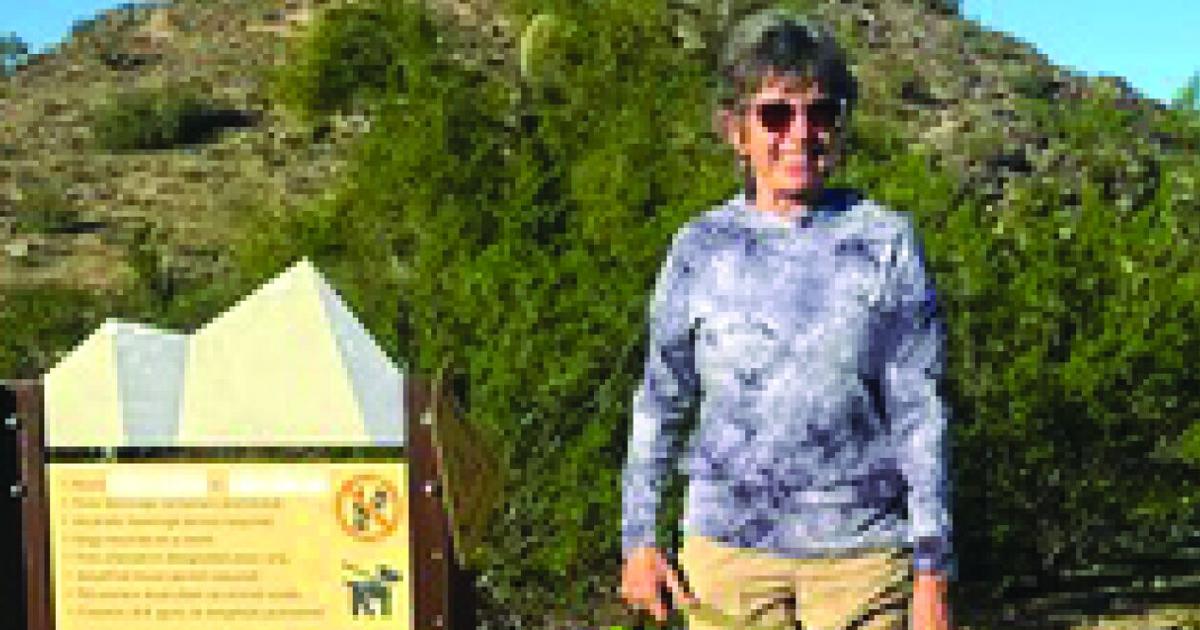Results have come back from a study that measured whether a City of Phoenix initiative to remind people to pick up after their pets had a positive effect.
In a word, yes.
The research focused specifically on the Pima Canyon and Telegraph Pass trails, both in Ahwatukee Foothills. The verdict: A 28% decrease in pet waste at the former and an 8% decrease at the latter.
“These changes were significant, and they were encouraging to see,” said Luis Weisel, chief water quality inspector for the Phoenix Water Services Department. “However, more work needs to be done to keep the outreach going and keep the public involved and also aware.”
Weisel said the entire project ran for three years and cost $94,547.
The city embarked on the study to help fulfill a requirement under an MS4 permit issued by the Arizona Department of Environmental Quality, according to the report from GHD Services, Inc. titled “Pet Waste Public Outreach Evaluation.”
Weisel said Phoenix has been finding elevated levels of E. coli in water samples since it began testing in 2009, and getting more people to pick up pet poo was one factor in mitigating stormwater pollution.
When asked if the city sampled the water after the recent heavy rains in September and October, Weisel said no.
The data for the study were drawn from the “Stop Poo-llution: Bag It, Tie It, Trash It” campaign that ran from October 2024 to February 2025. It was a collaboration between the Phoenix Water Services Department’s Environmental Services Division and Phoenix Parks and Recreation.
City staff held monthly events at the trailheads, posted 38 times on social media and publicized the campaign on two local TV channels. It removed pet waste from the trails before and after the initiative and sent the data, along with outreach information, to a consultant.
In terms of sheer numbers, more pet waste was removed after the outreach than before.
Over a three-week period, an average of 6 pounds was removed in February versus 3.5 pounds in September at Pima Canyon, and 4.7 pounds versus 2.2 pounds at Telegraph Pass.
Unsurprisingly, however, the number of trail users was significantly higher in February, so the amount of poop per park user decreased.
At Pima Canyon, the number of weekly trail visitors averaged 6,369 in February versus 2,599 in the higher temperatures of late September/early October. At Telegraph Pass, the average was 1,979 in February and only 769 in September/October.
To account for the increase in trail users, the report normalized the data to “pet waste per 100 visitors.” With that in mind, the numbers showed the more promising results.
“That’s why we conducted this study: to change people’s behavior and make a positive impact in the community,” Weisel stated.
Although the report’s key findings indicated that “the interventions of public outreach to improve pet waste disposal may have indeed been effective,” it also stated that various complexities weakened the statistical significance.
The pet waste report also included a dozen recommendations for the city to “strengthen future efforts and build on the foundation” of the study. They included more outreach, signage and pet waste stations, particularly in “hotspots” where pet waste is most prevalent.
Moving forward, Weisel said, the city will participate in several community events and continue its social media outreach. Phoenix Water also purchased 17 pet waste stations that Downtown Phoenix’s Clean + Green team placed throughout downtown.
However, in an email, a Phoenix Water Services Department spokesperson said there are no plans to install additional signage.
The temporary “Stop Poo-llution” signs were removed after the campaign.
She did note, though, that there are permanent signs at major trailhead entrances listing the “Park Code of Conduct.” They include a section about pets stating that off-leash pets and failing to remove animal waste are not permitted.
Ahwatukee resident Janet Kerby, who walks her dog, Bobby Dazzle, near the Pima Canyon trailhead, said she’d like to see more signs, poop bag stations and lidded waste receptacles at the neighborhood park inlets—not just major trailheads.
The signs about pet waste “are all when you’re right there at the bathrooms and ramadas,” she said. “They’re not at the little side entrances where most neighbors go in.”
Kerby also recommended that the city partner with local schools to have students do outreach about picking up pet waste as part of their community service hours. As a side benefit, she added, “Then, they gain appreciation for the trails.”
Additionally, Kerby said she’d like to see scofflaws fined for not cleaning up their pet’s poop. Phoenix Municipal Code Section 27-12 addresses animal waste and its disposal, but it does not state any penalties.
Weisel said that while they want to raise awareness, staff and volunteers can’t be at the trails 24/7.
“The city can only do so much,” he said. “People need to do the right thing.”
